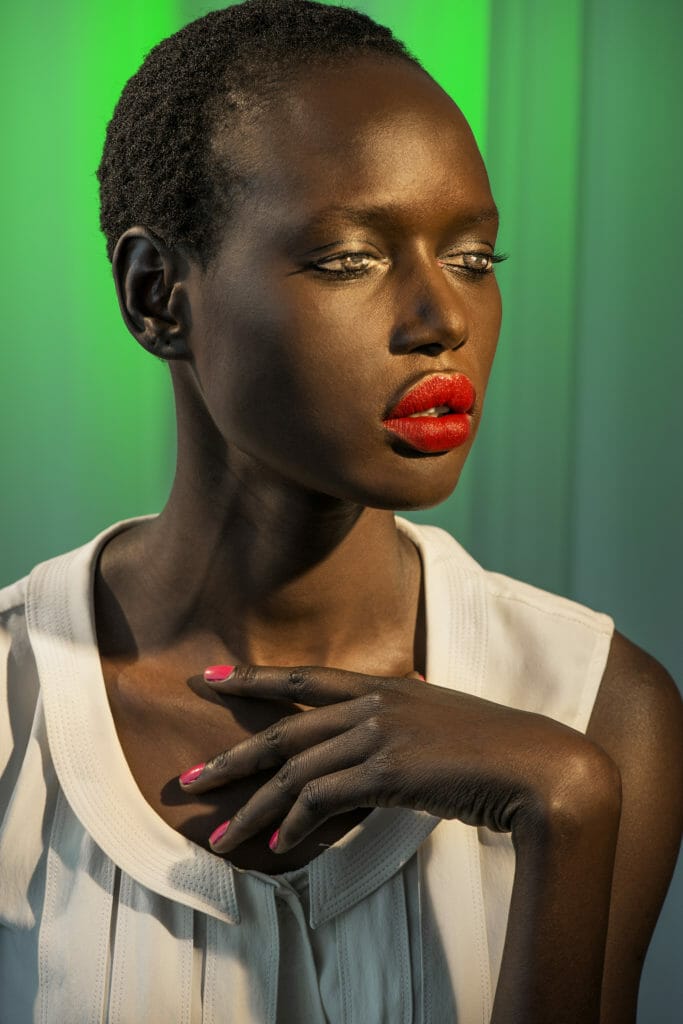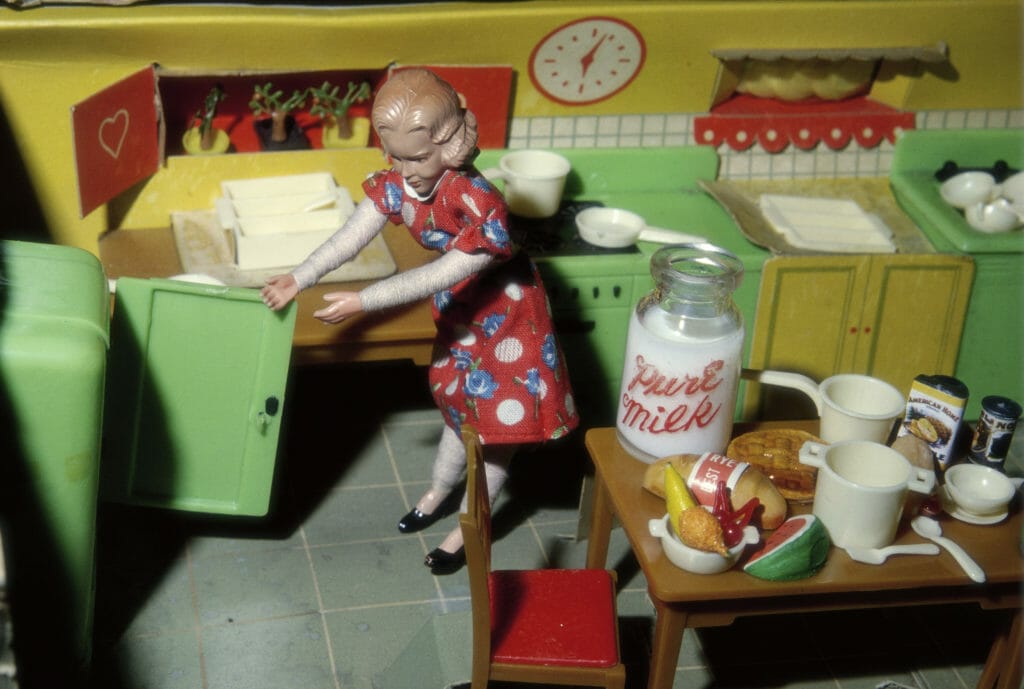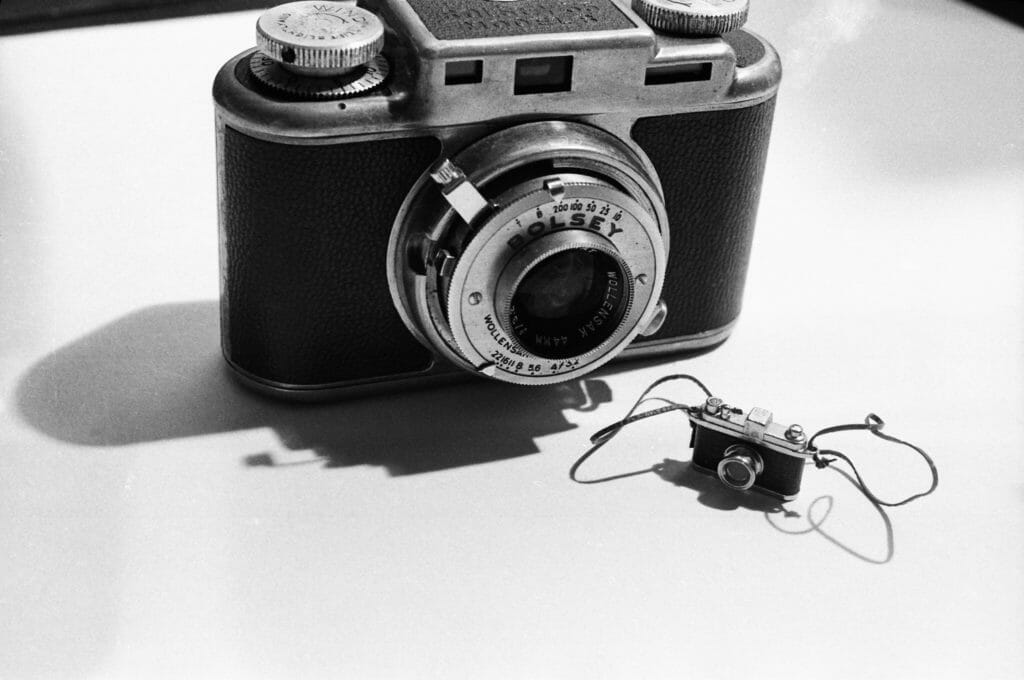Laurie Simmons: Big Camera/Little Camera will be on view to the public at the Modern Art Museum of Fort Worth from October 14, 2018, through January 27, 2019, and travel to the Museum of Contemporary Art Chicago, February 23 through May 5, 2019, where it will be overseen by Omar Kholeif, Manilow Senior Curator and Director of Global Initiatives. The exhibition is organized by Andrea Karnes, senior curator, Modern Art Museum of Fort Worth, with full support of the artist.
Dr. Marla Price, director of the Modern Art Museum of Fort Worth, announces a major survey of the works of Laurie Simmons (American, born 1949). This exhibition will showcase the artist's photographs spanning the last four decades, from 1976 to the present, a small selection of sculpture, and two films.
Simmons's career-long exploration of archetypal gender roles, especially women in domestic settings, is the primary subject of this exhibition and is a topic as poignant today as it was in the late 1970s, when she began to develop her mature style by using props and dolls as stand-ins for people and places. Often isolating the dolls and photographing them situated in tiny, austere settings, in series such as Early Black & White, 1976-78, Simmons uses fictional scenes to make observations about real life. These works are now iconic of her career. "Simmons's imagery takes into account her own experience of coming of age in the 1950s," says Andrea Karnes, senior curator at the Modern and organizer of this exhibition. "Without being autobiographical or spelling out specific narratives, however, the work strikes a psychological chord, seeming to underscore the difficulties of living the American dream, or in a larger context, any dream of domestic bliss."
By creating compositions that at times merge actual interior or exterior spaces with dolls and miniatures, and by placing props alongside functional objects, Simmons could explore her other central interest, to which photography lends itself so well: manipulating scale. The namesake image for this exhibition, Big Camera/Little Camera, 1976, from Early Black & White, illustrates this point. The actual camera in the image, which is juxtaposed with a miniature camera, was given to Simmons by her father, who was a dentist by trade and took up photography in his free time. "I put the two cameras together for scale," Simmons explains, "and as a metaphor - real life versus fiction. It was also a statement about what I intended to do with the camera."
After graduating from Tyler School of Art in Philadelphia in 1971, then living in upstate New York and subsequently traveling through Europe while living out of her car, Simmons moved to a loft in the then-low-rent Bowery section of Manhattan. To make a living, she worked as a freelance photographer for a dollhouse miniature company, and in her off hours she pursued her main ambition of becoming an artist. Influenced by her day job, Simmons began to photograph dolls and small plastic objects, particularly those from the 1950s, the era of her childhood. Describing these early works, Simmons has said, "I was simply trying to recreate a feeling or mood from the time I was growing up: a sense of the fifties that I knew was both beautiful and lethal at the same time."
A carefully chosen group of props preserved by the artist over the years, such as those used to create these early photographs, will be on display in Big Camera/Little Camera. This ephemera will offer new insight into Simmons's process, disclosing her longstanding fascination with models and fleshing out her use of color-coding to organize vignettes into cohesive and precise imagery.
The exhibition will include other crucial series that show the evolution of Simmons's work from female domains to notions of masculinity, such as Cowboys, 1979. Family Collision, 1981, addresses the psychology and dynamics of family. Medium- to large-scale works from the artist's seminal series, Color Coordinated Interiors, 1982-83, which investigates the formal characteristics of color, shape, and light; Tourism, 1983-84, a series of posed dolls set against postcards of famous tourist sites; and Clothes Make the Man, 1990-92, depicting male ventriloquist dummies in various attire from beach-casual to black tie, will also be on view. Humorous and strange, Clothes Make the Man symbolizes the aspirations of men and the falsehoods that can come about by acting the part - here Simmons is literally dressing up the dummy.
One of the artist's most well-known series, Walking & Lying Objects, begun in 1987, reveals an important shift in her oeuvre: It marks the first time Simmons uses larger-than-life props, as opposed to miniatures, and with these works, she increases the scale of her prints. People pose wearing giant props, hiding their faces but showing their legs. The personified objects probe the question of the importance of "props" with respect to humanity by representing the items we rely on to help define who we are. A birthday cake, house, camera, and hourglass, for example, animated by human legs, symbolize milestones, the passage of time, and how we record and remember past moments.
The exhibition will also present Simmons's more recent series, such as The Love Doll, 2009-11, which features high-end, life-size Japanese dolls in day-to-day scenarios. Just as Walking Objects represents a transition to monumental props, The Love Doll moves away from dolls in miniature, a change that jars our sense of space and scale in a new way - and yet the added element of strangeness is not unlike that evoked by the miniatures. Her latest body of work, How We See, 2015, shows another iteration of the artist's long-term interest in gender roles. For these images, Simmons hired make-up artists to paint open eyes on her sitters' closed eyelids. Photographing models with closed eyes that appear to be open examines cultural trends of masking in everyday online interactions. Simmons says, "Social media allows us to put our most perfect, desirable, funny, and fake selves forward, while naturally raising questions about our longings, yearnings, and vulnerabilities. In How We See, I'd like to direct you how to see while also asking you to make eye contact with ten women who can't see you."
Two films by Simmons will be showcased in this exhibition. The first, The Music of Regret, 2006, will be shown within the gallery space. The 35 mm film is a mini-musical in three acts and grew out of three distinct photographic series by Simmons: Early Interiors, Walking Objects, and Café of the Inner Mind. The theme of regret is underscored as vintage puppets interact with actress Meryl Streep, who plays the lead role.
My Art, 2016, will be shown as a feature film in the auditorium during the run of the exhibition. Simmons, who wrote and directed My Art, plays the role of an artist living in New York who is frustrated with her work and lack of recognition. Embarking on a new project, she begins to reimagine shot-for-shot vignettes from her favorite movies. Art and life collide in My Art when the film scenes mirror unfolding relationships in her life. The film debuted in September 2016 at the Venice Film Festival and premiered in North America at the 2017 Tribeca Film Festival, where it received high accolades.
When
October 14, 2018 - January 27, 2019
Where
Modern Art Museum of Fort Worth
3200 Darnell Street
Fort Worth, Texas 76107
Tickets
General (13+) - $10
Students w/ ID & Seniors (60+) - $4
Children (12 and under) & Modern members - Free
Every Sunday & Wednesday - Free





